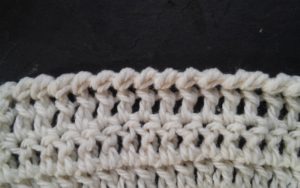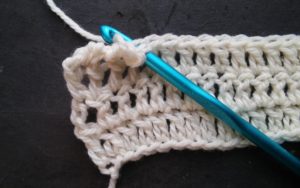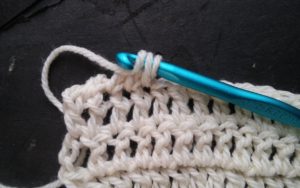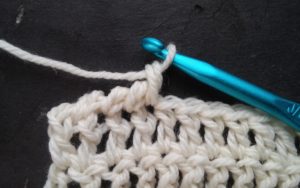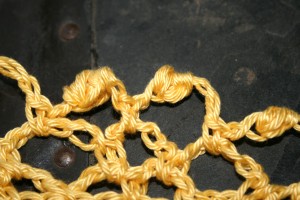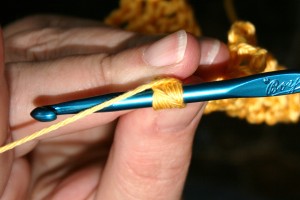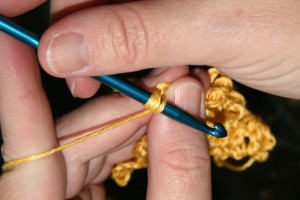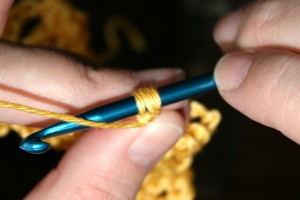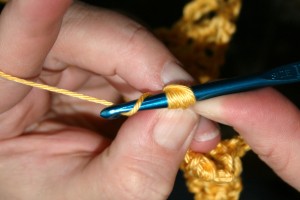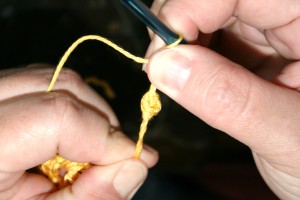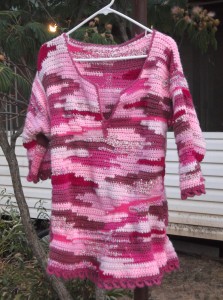 Often times it is the small details that can really cause your crochet work to shine. One of those details can be found in the edging.
Often times it is the small details that can really cause your crochet work to shine. One of those details can be found in the edging.
There are many times that I finish off a piece of fabric with a Reverse Single Crochet stitch, also known by the name “Crab Stitch”, but in my time teaching I have found that this stitch can be a bit to trying for some students. It requires a good sense of adjusting your yarns tension and working in the opposite direction (I discuss how to work the stitch here). However there is another stitch, The Corded Edge stitch.
The Corded Edge stitch looks very similar to the Reverse Single Crochet, but is easier to work. It is not quite a stitch as much as a technique that creates a braided or cabled look. It is worked in the last row of the fabric and is worked by rotating the two loops on the hook 360 degrees, and then finish the stitch.
Unlike a Reverse Single crochet, this technique can be used with any stitch. Below I have demonstrated this technique with a Corded Single Crochet and a Corded Double Crochet stitch.
To work a Corded Single crochet, you begin a single crochet just as you always do: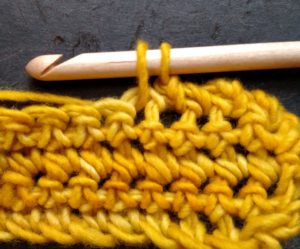 Insert hook in indicated stitch, Yarn over and pull through a loop.
Insert hook in indicated stitch, Yarn over and pull through a loop. 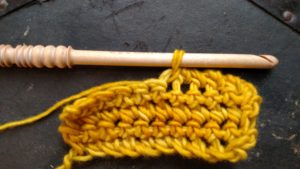 Now with 2 loops on your hook, you rotate your hook 360 degrees. It is not crucial as to which direction you make this turn as long as you are consistent with each stitch. There is a slight difference in the appearance depending which way you rotate, so sample each and see which you prefer. I typically rotate in the direction it feels most comfortable for my hand to work.
Now with 2 loops on your hook, you rotate your hook 360 degrees. It is not crucial as to which direction you make this turn as long as you are consistent with each stitch. There is a slight difference in the appearance depending which way you rotate, so sample each and see which you prefer. I typically rotate in the direction it feels most comfortable for my hand to work.
Now you yarn over and pull through the 2 twisted loops on your hook. This completes the stitch, and you repeat it in the next stitch.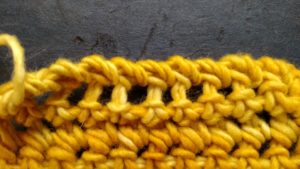
To work this technique as a Corded Double Crochet, you begin the Double crochet as normal: 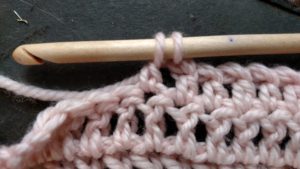 Yarn over, insert hook into indicated stitch, Yarn over, pull through a loop, Yarn over, pull through 2 loops.
Yarn over, insert hook into indicated stitch, Yarn over, pull through a loop, Yarn over, pull through 2 loops. 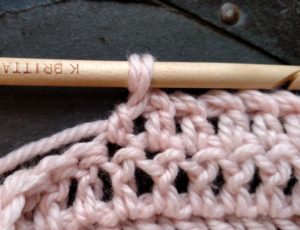 Now with the last 2 loops on the hook you rotate your hook 360 degrees, yarn over and pull through the 2 twisted loops.
Now with the last 2 loops on the hook you rotate your hook 360 degrees, yarn over and pull through the 2 twisted loops.
It is pretty simple, yet results in an edge that is very finished.

